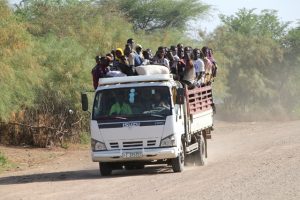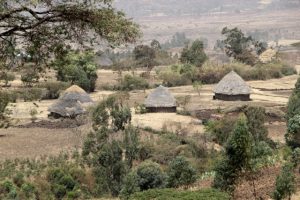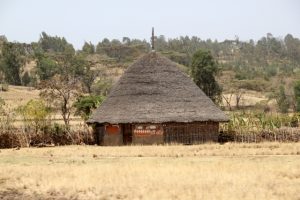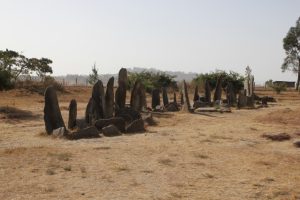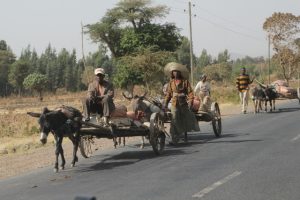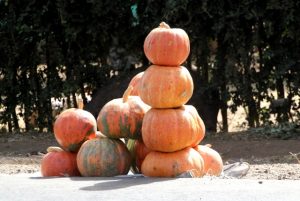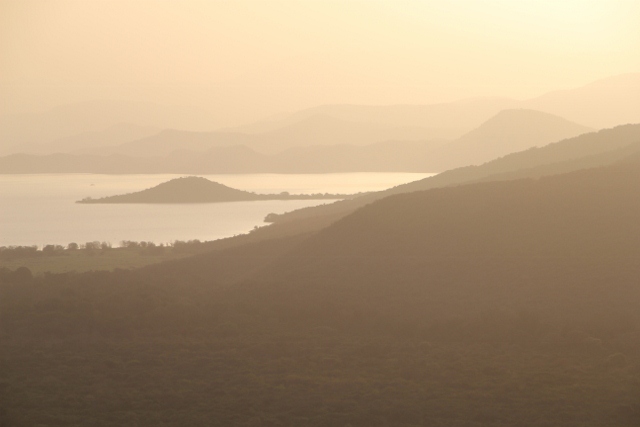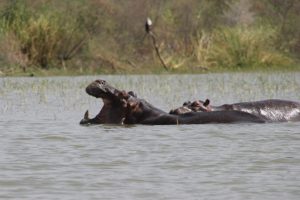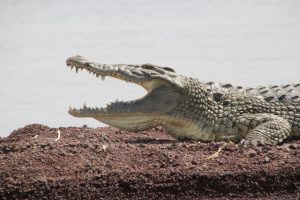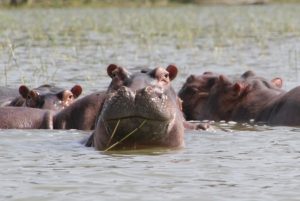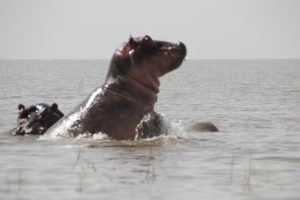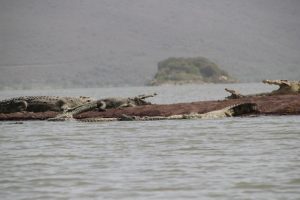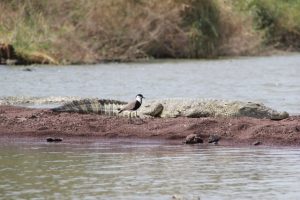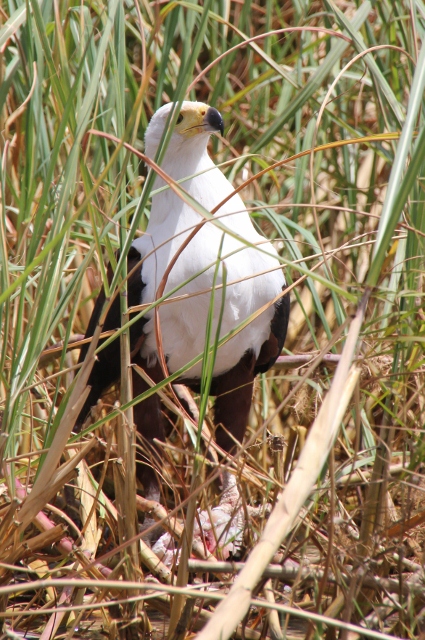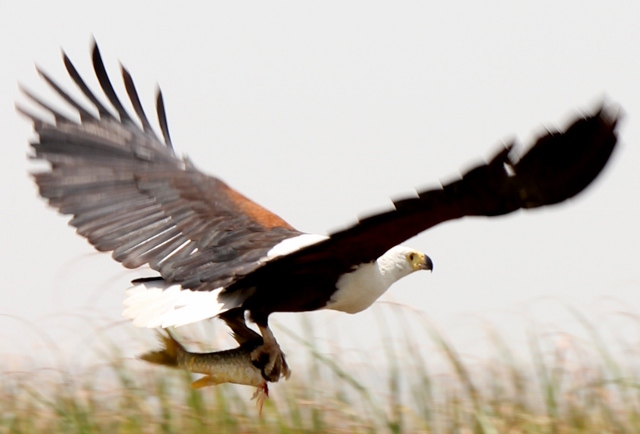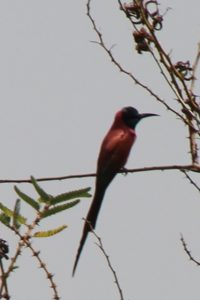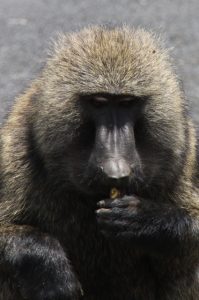With our return to Addis Ababa we have left a few things behind. One is the east, the predominantly Muslim part of the country. Another is long bus drives, and minibuses, and the associated haggling over fares and suitcases on and off the roof. For the remaining three weeks of our Horn travels we have upgraded ourselves to a private car with driver – not our usual way of traveling, but given the planned destinations, first the Omo Valley in the south and then the Danakil Depression in the north – two places where public transport is either almost, or totally absent -, we saw no other option than the car and driver. And a bit of comfort.
To get to the south we drove to Arba Minch, and we entered a different country. Gone are the dramatic mountains, the steep valley and the basalt-covered plateaus, gone are the dry, treeless landscape and the small, minimalist hamlets. And at least immediately south of Addis Ababa, it seems that gone, too, is the abject poverty that we saw in the north, and even more so in the eastern fringes of this country. The land is much greener, the trees are more numerous, and much taller, the herds of cattle are much bigger – they are moving constantly, over the road, from their homes to the watering places, or to the grazing fields, guarded by small boys with sticks. The tukuls, the traditional round huts that we have seen in most of Ethiopia so far, here are somehow bigger, better constructed, and even decorated, sure enough a luxury only available to those who have a little more than the poorest of the poor.
On the way we pass the world-famous stelea field of Tiya – never heard of, but interesting enough, 12-13th Century stelea depicting the profession of the deceased who are buried behind it. Good for a few pictures, but difficult to place in historic perspective. Where in northern Ethiopia everything is myth, somehow fitting – or not, but at least you can debate it – within a greater complex of history and legend, the southern part of the country, everything south of Addis Ababa really, has only relatively recently be added to the nation-state. At the end of the 19th Century, emperor Menelik II expanded the Ethiopian territory, originally limited to the northern highlands, by incorporating the various sultanates in the east, like Harar, and by subjugating the southern tribes into the empire, too, not only the so-called Gallo – a troublesome people that is now called the Oromo people, and, incidentally, now consists of no less than almost three-quarters of the population (you don’t use the word Gallo anymore, it apparently means something like Barbarian, a really offensive term) – but also the many smaller, animist tribes in the border area with Kenya and South Sudan. Problem is that they do not really seem to have any history comparable to the great Amharic and Tigrayan north, or at least nothing written about. From all the books on the reading list, only Nell Westerlaken spends two short chapters, at the very end of her book, on Southern Ethiopia, all the others ignore the area completely.
So, we entered a different country, different not only politically and historically, but also geographically. Ethiopia features significantly the Great African Rift Valley, a crack in the earth that doesn’t have an equal comparison anywhere else in the world. From north to south, from the Middle East (the Dead Sea) all the way to Tanzania, Malawi and Mozambique, this is where – who knows – ultimately over millions of years a new ocean separating continents may develop. South of Addis Ababa is the one of the most expressive part of the Rift Valley, in the form of a series of lakes, and a wide, flat valley, bordered on both sides by high mountains. And Arba Minch, or better even, our hotel in Arba Minch, overlooks two of those lakes.
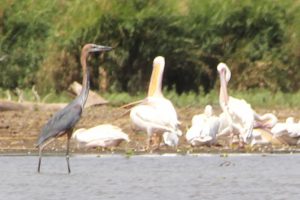
(17) plenty of water birds, of course, of which I have many more, and better, pictures, but this one shows both herron and pelican
Of course, any lake invites a little boat trip, no less if the lake supports something called the crocodile market. Obviously, you will first need to buy an entry permit to the National Park, and then rent a boat, somewhere else, and employ a mandatory guide. Our guide didn’t speak English, and didn’t know the names of any of the birds we asked him, not even in his own language, so that the boat driver could have translated. But the boat trip didn’t disappoint. No small islands with churches and monasteries, like Lake Tana earlier, but plentiful hippos, and a whole bunch of crocodiles, quite sizable ones, at a sand bank which is called – indeed – the crocodile market, despite nothing being traded there. The pictures, you will agree, are far more convincing than last year’s dolphins in the Mekong River. In addition, the lake shore is home to many birds, fish eagles, pelicans, herons, and a range of smaller ones – a true delight for the newly converted bird watchers in us. It didn’t matter that we almost burned to death, here – one of the things that hasn’t changed is the temperature, of course!
next: the Dorze

